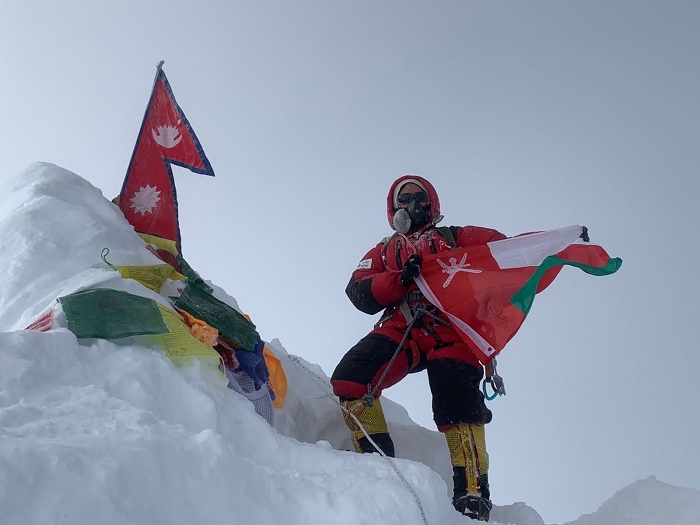
Muscat: Omani mountaineer Nadhirah Al Harthy has set another record by climbing Mt. Ama Dablam, regarded as one of the most challenging peaks in the world.
Located in Nepal and with a summit at 6,812 metres, Ama Dablam’s steep rise and treacherous terrain make climbing it a daunting task for all but the most experienced of mountaineers. This is Al Harthy’s third mountain scaled in Nepal: she famously became the first Omani woman to scale Mt. Everest (the highest peak in the world at 8,848m) in 2019, and followed that up with a summiting of Mt. Manaslu, which stands at 8,163m and is ranked eighth in terms of the world’s highest peaks.
“The time taken to ascend and descend from every mountain varies in terms of the difficulty of the terrain and its height,” she revealed. “There are, of course, other factors that can interfere with your climb: bad weather conditions can delay your climbing time. Usually, it takes more than a month to scale mountains that stand at more than 8,000m.”
She added, “When you are up there, you realise the importance of things that are valuable: you understand the importance of spending time with family, how seriously you must take work, and how necessary it is to dedicate yourself to training for such climbs. Mountain climbing is relatively new in Oman, and it is a sport that requires strength, determination, and plenty of financial support.”
Nadhirah’s accomplishments also help do her job far better: she serves as the assistant director for girl guides at the Directorate General of Scouts and Guides at the Ministry of Education. She is confident her successes have inspired other young women to pursue their ambitions.
As it is in any field, learning and knowledge are paramount for mountaineers, so that climbers can rely on themselves to take critical decisions at high altitude and during challenging circumstances. The technical skills required to scale mountains are of utmost importance, as is dedication towards continuously updating and improving oneself.
“Commitment to safety procedures is very necessary because this sport is always accompanied by risks,” she revealed.
“Good preparation for each trip, regardless of its place or time, and no matter how confident and experienced the climber may be, is very necessary. Preparation also includes knowing local weather conditions, and what equipment to bring. The sense of responsibility towards safety and security must remain at all times with any adventurer.”
Nadhirah Al Harthy’s inspiration to become a mountaineer stemmed from the late Khalid Al Siyabi, the first Omani man to climb Mt. Everest, whom she met during a chance encounter in 2017. After hearing of his story, she was instilled with a deep desire to climb the mountain herself…it was her first brush with mountain climbing.
Through voracious reading, constant learning, and continuous training, she trained herself physically and mentally to go boldly where few have gone, and fewer still have returned.
She remains firm that it was her desire to scale the Everest that drew her to becoming a mountaineer.
“The first summit I climbed was indeed the Everest,” added Al Harthy. “I tried before to scale Mount Kilimanjaro in Tanzania in 2015, as part of a scientific research trip taken with some students, and in 2018, I attempted to summit Ama Dablam for the first time, as part of my training. I could not, however, reach these summits.”
“My success on scaling Everest remains my most cherished memory,” she added. “When I reached the peak, I understood what it meant to finally realise a dream, and how it was made possible, due to hard work, desire, and self-belief. I was finally able to savour a happiness like no other after two years of harsh training, during which time I had to make many difficult decisions. The Everest expedition took two months, because high-altitude locations take time to acclimatise to, because the body needs to first get used to the conditions. This process of adaptation is extremely important, as if you don’t you could suffer from various health problems brought about by high altitude affecting most bodily functions.”